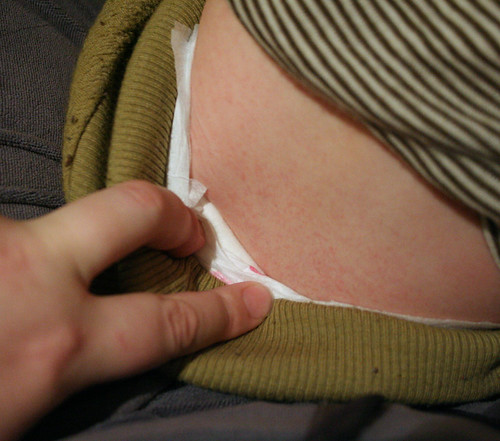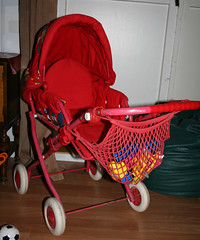Male is the default; female is exceptional.
Case in point:
The lass has pink clothes. Probably more than I would ideally have chosen, in fact, because I’m not that fond of pink myself. However, most of her clothes are colours that I consider gender neutral (but then, to me, gender neutral is pretty much everything except pink and baby blue), or at least not pink-on-pink, but say, pink and brown, pink and grey and so on. Hence – which follows from the above theory – she is continually taken for a boy. Today she wore
- jeans (very “girly” pattern in silver on the back pockets, but quite plain otherwise)
- red and silver trainers
- long-sleeved t-shirt in yellow, green and red
Both the IKEA employee who was running a “fairground” where the kids got to throw tiny softies at a target for the chance to win a big softie (for free, everyone got a prize, did I mention I love IKEA?) and a mother with a daughter (ok, now I’m doing the assuming, but the kid wore all pink from head to toe) a little younger than the lass automatically referred to her as “he” and “the boy”.
Why? Why when everyone knows about half the kids you meet are going to be female is “male” still default unless you shout your gender from the rooftops by wearing pink-pinkety-pink? What the f*** are we teaching these kids? When did this start applying to toddlers and not just babies (come to think of it, when did it start applying to babies)? I’m the daughter of a feminist, and wore practically no pink as a child, did everyone assume I was a boy, or were they more practically minded in the 70ies?
Disclaimer: I don’t “mind” the lass being taken for a boy, as such. It doesn’t matter on a personal, individual level, I’m just worried about what it says about our society’s expectations for girls (and boys).
The irony? I haven’t been extremely opposed to pink so far. I have even purchased a few pink-and-princessy garments for her myself. But because I am now continually made aware of how much “people” read into the pink/not-pink choice, I am getting to the stage where I might just ban pink from the house. Just when the lass is getting to an age where she might actually start caring.
Mind you. Perhaps that is just the point in time where it is important to start introducing rules and not just go with the flow?

